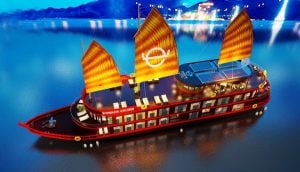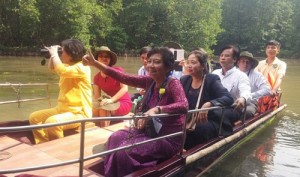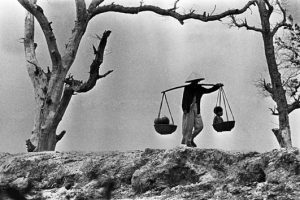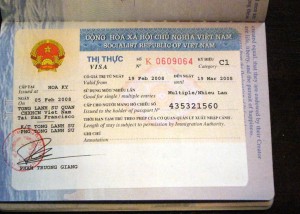Vietnam, U.S. discuss land reclamation in South China Sea
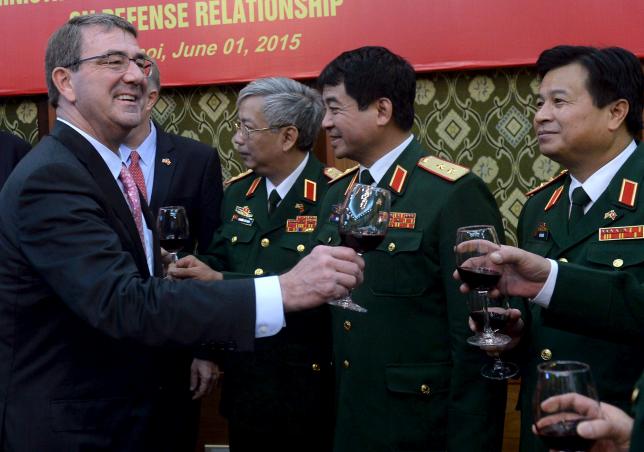

U.S. Defense Secretary Ash Carter discussed his call for an end to island-building in the South China Sea in talks on Monday with his Vietnamese counterpart, who said Vietnam had not expanded its islands but had done work to prevent wave erosion.
The response appeared to fall short of the immediate halt to land reclamation activity and further militarization of the islands that Carter sought in an initial appeal last week in Hawaii, and again at a security conference in Singapore.
Carter told a joint news conference with Defense Minister Phung Quang Thanh that he and the general had discussed his proposal for a permanent halt to reclamation and militarization of the islands and that Vietnam was considering the idea.
The U.S. defense secretary, who is on an 11-day trip to the Asia-Pacific, has focused on maritime security in his public remarks amid concerns about the implications of China’s massive island-building effort, which has added 2,000 acres (809 hectares) of land in about 18 months, most of it this year.
Carter has acknowledged that other countries have conducted reclamation projects in the region, including partners like Vietnam, and urged them all to stop. But he said China’s activity had outstripped the others and was undermining security, a charge that Beijing has rejected.
At the news conference, Thanh and Carter were questioned whether the U.S. defense chief had asked Vietnam to stop land reclamation activity. Thanh said the two sides had discussed the issue.
“Vietnam has recently conducted consolidation on the islands under Vietnam’s sovereignty,” Thanh told reporters, noting that Vietnamese troops were stationed on nine “floating islands” and 12 “submerged islands” in the region.
“On the floating islands, we conducted embankment (consolidation) to prevent them from waves and erosion, to ensure safety for the people and the soldiers stationed on the islands,” he said.
“On the submerged islands, we only built small houses, which can accommodate a few people and we are not expanding. The scope and characteristic of our work is purely civilian.”
Submerged islands feature underwater reefs, while floating islands are those with surfaces above the water or which can be built from submerged islands, by adding steel structure, soil, rocks and concrete.
A U.S. official, speaking on condition of anonymity, said later that Vietnam distinguishes its activity from that of China’s, saying that it conducts work to maintain buildings erected some time ago and work to prevent wave erosion.
The official indicated that Carter would like to have clearer distinctions between what is new construction that would be barred and what is maintenance that might be permitted.
Carter and Thanh also signed a Joint Vision Statement to guide future military cooperation between the former foes, who fought a 1955-1975 war and only normalized ties 20 years ago.
As part of the expanding cooperation, Carter announced the United States would help Vietnam set up a site to train troops for U.N. peacekeeping operations and would send a U.S. expert on peacekeeping to Hanoi.
On Sunday, Carter visited the Vietnamese navy and coast guard headquarters and pledged $18 million to help Vietnam buy U.S. patrol boats.
News Source: reuters.com/article/2015/06/01/us-vietnam-usa-defense-idUSKBN0OH1L120150601

